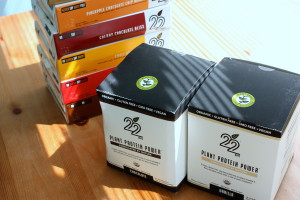Il XIII Romanestesia conserva la tipologia degli anni precedenti, cioè di un congresso rivolto agli anestesisti-rianimatori che operano in ambito di medicina critica. L’aspetto comune agli anni precedenti è la presenza di workshop precongressuali interamente gestiti dalla componente infermieristica e dei tecnici della perfusione cardiocircolatoria, figure imprescindibili nel percorso di cura del paziente ad alto rischio. Le figure coinvolte, di spessore nazionale ed internazionale, discuteranno di problematiche vive e dibattute quali la sepsi ed il trattamento extracorporeo delle patologie cardiorespiratorie. Si è mantenuta la discussione sulle problematiche del dolore così importante anche e soprattutto nel paziente critico. Insomma tanti aspetti della anestesia e della terapia intensiva che sicuramente susciteranno interesse nella comunità anestesiologica della nostra regione e anche in ambito nazionale. Il razionale rimane quindi quello della conoscenza e della formazione sulle tecniche di cura più avanzate per affrontare con maggiore efficienza le problematiche del paziente critico.
Autore: Fedra

Indoor vs Outdoor Venues: Which is More Sustainable?
When you’re planning any kind of event, a big question is always where the venue should be. After all, the venue can have a huge impact on the overall experience of your attendees. The shift from an indoor to an outdoor venue can make all the difference, even when it comes to making your event more sustainable.
Energy Use
You may not often think about how sustainable an event is based on whether it takes place inside or outside but there certainly are some environmental factors to consider. If your event takes place outside during the day, for instance, you can say goodbye to lighting! On a bright day, the sun will provide all the natural light you can ever need. As for heating/cooling, simply dress for the weather!
Of course, energy usage is nullified somewhat if your indoor venue happens to use renewable energy sources such as solar photovoltaic panels. Many indoor venues do focus on being more environmentally conscious and make an effort to reduce their environmental impact.
Transportation
Indoor venues also have the added benefit of being closer to busier urban areas, making access to public transit easier and reducing travel times. Large outdoor venues can often be located much further from urban centres in order to preserve the natural scenery, meaning your attendees are going to have to increase their travel and subsequent carbon footprint in order to get there. As mentioned before, travel often has the largest impact on an event’s carbon footprint. Whether your venue is indoor or outdoor, you can reduce carbon emissions choosing your venue by proximity to public transit.
Waste Management
One major challenge you may face if you choose an outdoor venue is the problem of event waste management. In general, people just seem to be more considerate about not littering when they are indoors.
If you’re planning a large outdoor event – be it a music, food or street festival – you already know how waste management can present a big headache.
For events with restricted access grounds, you have a lot more control on the waste management front. For walk-up events with a security perimeter, for instance, you can prevent certain types of waste (e.g. plastic water bottles) from entering the grounds. The benefit here is that you have a much better grasp on the kind of waste that you’ll be dealing with.

Indoor vs. Outdoor Venue
When choosing an indoor or outdoor venue, you are the only one who knows details such as attendance, time of year, and budget. Either way, the choice is yours to make and I hope that you are keeping sustainability in mind as you make that choice.

How To Organize A Fundraising Event
Fundraising events are a popular form of fundraising. While they can be great money makers for an organization, they can also be time consuming and expensive. The success of events depends on careful planning.
To help you ensure that your fundraising event is a winner, here are ten major components that you must incorporate into your event plan:
1. Purpose
Before doing anything else, you must decide what the purpose of your event is. Is this truly a fundraising event? Or does it have other goals? Perhaps your organization may be hoping to raise money at the event, but the main function of the event is to gain publicity, or reach out to a new network. Many charitable events have more than one goal. Figuring out the details for your event will depend on knowing what goals you are trying to achieve.
2. Fundraising Goal
In conjunction with the event host committee, organization staff, and key fundraisers, you must decide what amount of money you plan to raise at the event. If this is truly a fundraising event, then everything in the event plan will be geared to raising this specific amount of money. The amount you choose should be what you hope to net, that is, the amount you plan to raise after expenses are deducted.
3. Budget
Every fundraising event plan should contain a complete budget listing all of the expenses that will be required to hold the event. Your budget should include staff, invitations, space rental, catering, entertainment, transportation, security, utilities, and anything else that will be required to make the event a success. Your budget should take into account your fundraising goal, ensuring that you raise that amount above and beyond all expenses. Be sure to leave a little extra room in your budget for unforeseen costs.
4. Leadership
As part of your fundraising efforts, your event will most likely have a “host committee” and one or more “host committee chairpersons.” These people are responsible for contributing substantial amounts to the event and encouraging others to do the same. The host committee is generally composed of wealthy donors, business leaders, or local celebrities. The host committee and chairpersons are not responsible for actually running the event, but are integral to ensuring that you reach your fundraising goals.
5. Target Audience
Who is the target audience for your event? Is this a general fundraiser where everyone will be invited? Or is this event geared towards a specific group like business people, parents, or young professionals? In short, you must decide whom you will invite to your event.
6. Set Up
Your event staff should plan the event set-up well in advance. The set-up includes all of the particulars of the actual event: Where will it be? Will food be served? Will there be entertainment? What kind of dress will be required? What is the itinerary for the event?
7. Marketing
Just like a new product, your event needs to be aggressively marketed to your target audience. You need to convince your supporters that your organization and event are worthy of their time and money. Draw up an entire marketing plan for the event. Possible methods of “getting the word out” include: using your non-profit’s fundraising network, mailed invitations, direct mail, phone banks, word of mouth and the event host committee.
8. Sales
Once you market your event, there must be a procedure in place for making the actual ticket sales, or accepting donations for the event. You must decide whether there will be different contribution levels for the event (such as a flat ticket charge, an extra charge to be invited to a V.I.P. reception in addition to the event, etc.). You must decide who will sell the tickets, how they will be shipped or delivered, and who will be responsible for organizing the incoming information.
9. Practice
While you probably won’t need a full run-through of your event, it is essential that everyone who is working the event know, ahead of time, what their responsibilities are, where they should be during the event, and how the event is going to “flow.” If you are having a large or unusual event, the key event staff may want to have a practice run to make sure that your operation is running smoothly.
10. Thank You
One of the most oft heard complaints from contributors to charitable fundraising events is, “They never even said ‘thank-you.’” Ditto for your event volunteers. Make sure that the organization takes the time to send thank-you notes to everyone who is involved in your event, including contributors, volunteers, staff and vendors. Keep your donors happy… you’re probably going to be asking them for another donation sometime down the road.

How To Take Notes at Events
Thanks to technology, nowadays we have many gadgets to track things. They are the personal secretary whom we cannot afford.
Similarly, at an event, to maximize the ROI (return-on-investment) in terms of money and time, it is also important to track important things such as “check out the book <<Hooked>> mentioned by the speaker”, “follow up with John on the introduction to a potential engineer recruit”, etc.
Note taking is not just for event goers, but also for event organizers. Organizers can use notes to track TODOs to make sure that nothing falls through the cracks during the busy event days.
Here are 8 tips for note-taking at events and suggestions on how to easily take notes within the context of the event activity.
What to write? [For Event Organizers]
1. TODOs for event management
You probably already have a general event checklist to make sure everything goes smoothly. After checking that, it is important to write down all the details to do during an event, e.g. checking special A/V equipment or catering schedule before a specific event. It is also helpful if you can easily share the notes with your fellow organizers.
2. Speakers / VIPs Information
To make sure that speakers and VIPs will arrive on time and you greet them appropriately, it is helpful to take notes about their phone numbers, extra parking permits arranged, seating information, etc., just in case. If you need to pick them up from an airport, it is also helpful to have their pictures to recognize them as well as any useful information helpful for ice breaking.
3. About people you met at an event
Engaging new members, attendees, or VIPs is important especially if you are organizing an event for community building, networking, or fundraising. You can also meet potential sponsors and vendors to work with in the future. It is useful to remember not only their names and contact information but where you met, what you talked about, and what’s the next step to follow up.
4. Onsite feedback and observations for the future events
As an event professional, you will also learn new things by making mistakes, listening to attendees’ feedback, and observing how pleasant or unpleasant things happen unexpectedly. A quick note taken at each moment will be a precious resource for you when you recap lessons after the event and apply them for future events. You can also take a note about attendees / members who provided a valuable input for you and send a thank you email after an event.
What to write? [For Event Attendees]
1. Pre-event notes: Questions to ask & people whom to meet with
I bet you attend a professional event to gain new knowledge and experience, and/or network with new people. To achieve it, you need to do homework prior to the event: explore event programs and think about questions to ask speakers or industry experts; research their backgrounds and take note on what to talk about with them.
I know it is not easy especially if you don’t know who else will attend the event or don’t have time to search their backgrounds on the internet.
2. New information and experiences you get
You get lots of information from others at an event, but it is unlikely to retain all the information. It is often just a name of a book or a new product, buzzwords, or a person’s name mentioned during a conversation. It is always helpful to take a note of them and do web search later not to let useful information slip through our fingers.
3. About people you met at an event
If you met an important person at an event, for example potential clients or business partners, you would like to write down any useful information to engage them after the event, such as what she/he was interested in, commonality both of you have, summary of the conversation and contact information.
4. Personal plans on event activities and logistics
While organizers usually provide you enough information about local attractions, directions, parking information, etc., it is always handy if you bring your own notes about a direction from your place, more cost-effective shuttle bus or parking lot. It will be good to take a quick note for organizers’ announcements, such as schedule changes, meeting scheduled onsite, and wi-fi password.
How and where to write?
Nowadays many people use smartphones to take a note and there are good note-taking apps out there such as Evernote or OneNote. While they are much better than writing on a piece of papers or napkins, they are not the best tools for notes at events as it is not easy to associate your notes with the specific event activity the notes were taken for, such as a session or meeting you wrote about.

Vegetarian and Vegan Catering for Events
In 2010, a report released by the United Nations Environment Programme encouraged a global shift to a more plant-based diet in order to combat the environmental effects of consuming animal products.
Event planners can also do their part by including more vegetarian and vegan options at events. Current menu options, however, usually lack a serious consideration of nutritional content and variety. As a result, event attendees may feel discouraged and don’t always choose the more sustainable vegetarian or vegan option.
Dedicated Vegetarian or Vegan Caterers
So what are some practical suggestions to make vegetarian and vegan food at your event more accommodating? Try simply catering from a local vegetarian or vegan caterer in your city.
If your city has a limited selection of dedicated vegetarian or vegan caterers, consider purchasing from a vegetarian or vegan”-friendly” caterer or restaurant. Many caterers and restaurants now have a selection of vegetarian/vegan options on their menus, oftentimes marked with a “V.” If you are considering making a fully vegan purchase, play it safe and ask for the list of ingredients to ensure that animal products, such as milk powder or egg whites are not hidden in the meal. As a general tip, Thai and Indian cuisines usually have a wide selection of veg dishes but don’t let that prevent you from exploring different cuisines.
Some caterers and restaurants do not have an existing vegan option, but customizing your meal is always an option.
If you are planning to dine out at a restaurant for your event, it is important to look for the vegetarian or vegan options on the menu before deciding to go. To play it safe, you can call in beforehand to confirm that the ingredients used are plant-based. While a greater number of people now understand the term “vegan,” making these assumptions may still be confusing to them. The safest option is to politely use the term “vegan” and explain if the term is not familiar to them.
As we recognize the role of food in sustainability, accommodating veg food is a great leap in the right direction.
Stay food-conscious!








